This is my first time in Rocky Mountain National Park (I know, spent three years in Boulder but…) – what a sensory treat! We entered the park from the west and motored steadily upward, passing over the Continental Divide, continuing up until reaching a an elevation of 12,183 feet before heading down to our campground within the park (made reservation this time) at Aspen Glenn campground. If you don’t like roads with sharp drop offs, you might want to forego the Trail Ridge Road. We did make a stop at the park Alpine Visitor Center. The visitor center is located, as the name implies, all within the alpine zone – quite breathtaking – gotta love the alpine beauty of the area and gasp at the high elevation.
We got to the park mid afternoon, so after checking out the Alpine Visitor Center and its snow fields for the Brown-headed Rosy-finch (the primary purpose for visiting the park), we headed to our campsite. Luckily we had booked our campsite on line as there were no campsites available to those not so lucky campers.
The next day we went back to the Alpine Visitor Center to once again search for the Brown-capped Rosy-finch. We read they were found in alpine areas so decided to hike up a short ridge line trail off the Fall River Road and if that trip failed to elicit the bird, then to hike on the Ute Trail (that crosses the alpine zone) located across the road from the Alpine Visitor Center entrance.
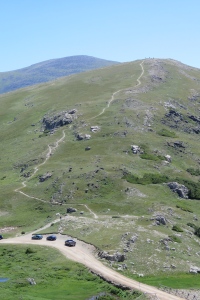
Road in the foreground is the Old Fall River Road. We hiked the trail up to the top of that mountain to an elevation of 12,077 feet.

Our view with the Old Fall River Road leading to the Alpine Visitor Center located just to the left of the snowfield in the photo. We hiked down the road to the trailhead and then up the trail to the top then back down again.
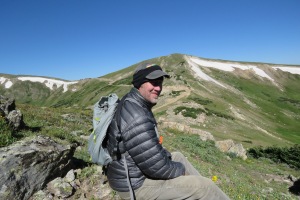
Jack at the top. The morning was cool at this elevation, but quickly warmed up. Oh, forgot to mention, the wind was blowing at 26-37 mph

Yes more Yellow-bellied Marmots enroute. This one has certainly gained a lot of weight in preparation for its eight month hibernation.
No luck in finding the Brown-capped Rosy-finch. So, Ranger to the rescue….. When we got back to the Alpine Visitor Center Jack asked a ranger where we might see one. He said they liked snow fields and suggested we climb a 12, 324 ft. mountain called Flattop and check the snowfields, because the birds had been spotted there, and if that didn’t work to climb/hike over two adjacent peaks and search those snowfields. We laughed, thinking we should have asked him the question yesterday of where to find the bird, but then we might have gotten a non-birder ranger.
The lure of a life bird compelled us to brave the hike/climb the next day with an early start. We left the campground early but with a bit of a drive to the trailhead we arrived about 7:30 am. There were already about 30 cars in the Bear Lake parking lot. Undaunted we set out to climb 2,849 feet in elevation over a 4.4 mile distance (yes, one way). Oh and we started at 9,475 feet. Up, and up, and up we went. Jack could have made it up a lot faster if he didn’t have to wait for me, but being the nice guy that he is …. We were passed by at least 20 people – of all ages.
As we were walking up the trail we occasionally stopped for birds, including a Dusky Grouse located about two feet off the trail. This bird continued to feed undaunted as I moved to get some great photos.
We were about 1/8 mile or less from the top of Flattop when I spotted a snowfield and a good excuse to rest. I glassed the field and saw what looked like our quarry – a Brown-capped Rosy-finch. So I stepped off the trail and gingerly walked over the alpine slope to get a better look and sure enough a life bird – the Brown-capped Rosy-finch. Woohoo!!! Also with the Rosy-finch were a number of American Pipits.
Oh, by the way, Jack seeking the final view, finished climbing to the top of Flattop while I watched the Rosy-finches. I met him on the trail as he was coming back down and thought, ‘why not go to the top’. I think I took three steps and thought, ‘I climbed this far to find the bird, I saw it, so why continue upwards’. So back down we went. The climb wasn’t easy for me because of the elevation gain and the elevation at which we started and I had to keep reminding myself that if I wanted a chance at seeing the bird I had to keep going. I’m glad I did – for the bird and for the scenery, which was breathtaking. You could see forever.

There were a lot of Pikas along the trail – in the rocky alpine areas. Fun to watch them run and hide with their cheeks full of grass.

Brown-capped Rosy-finch. These birds are found only in alpine areas in Northern New Mexico, Colorado, and Southern Wyoming.
After our visit to Rocky Mountain National Park and the family reunion at the Estes YMCA camp, we left to visit Jack’s old friends in Montrose and Durango.
Remember – Everyday is “A Great Day to Bird”



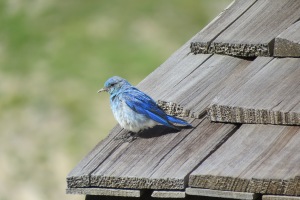
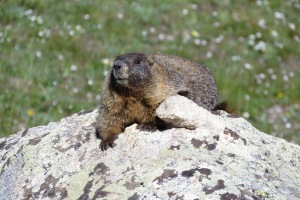
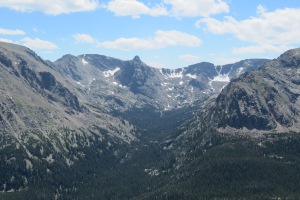
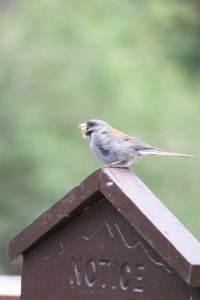
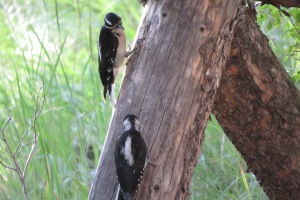

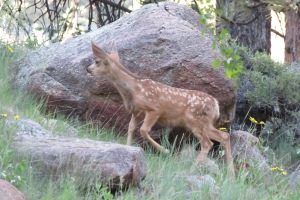
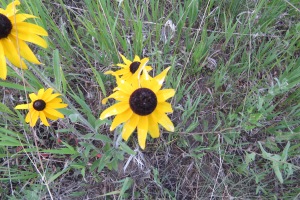




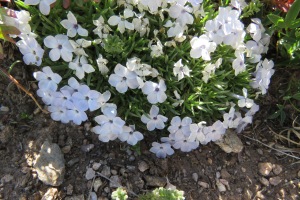




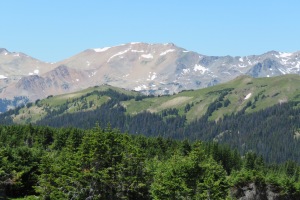
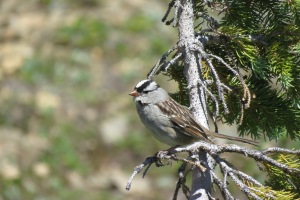



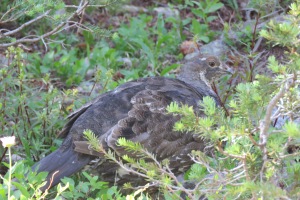
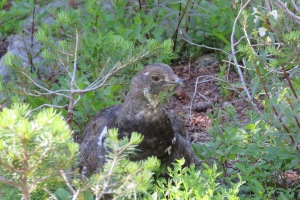
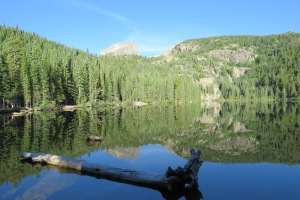
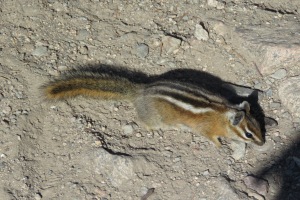
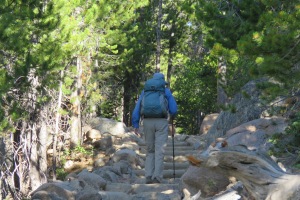


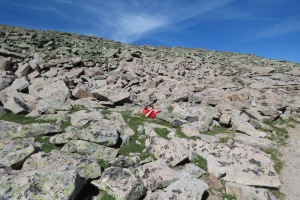




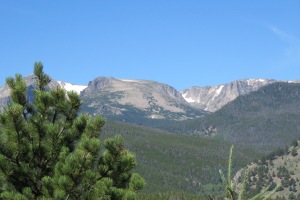
Leave a Reply